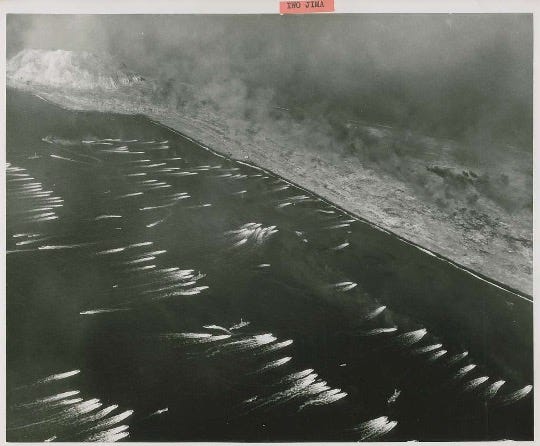Iwo Jima at 80: The Battle That Changed the Pacific War
Its significance, the men who fought, and the books that capture their legacy.
Tomorrow at 0859 a.m. marks 80 years since the first wave of Marines landed on the black sands of Iwo Jima, launching five weeks of relentless combat. The battle’s ferocity resulted in the highest number of casualties the Marine Corps has ever suffered. By its end, the Fifth Amphibious Corps—comprised of three divisions and nearly 75,000 troops—had sustained 25,851 casualties, one-third of the assault force, the equivalent of an entire Marine division killed or wounded. Deemed a strategic necessity, the assault was a pivotal moment in the island-hopping campaign to defeat the Imperial Japanese Empire. The island was declared secure 36 days later, on March 26, marking the end of one of the bloodiest chapters of World War II. The battle was defined by brutal, close-quarters combat against a determined enemy entrenched within a fortified labyrinth of tunnels and bunkers carved deep into volcanic rock.
Keep reading with a 7-day free trial
Subscribe to The Military Reading Room - History, Strategy, and Insight to keep reading this post and get 7 days of free access to the full post archives.





